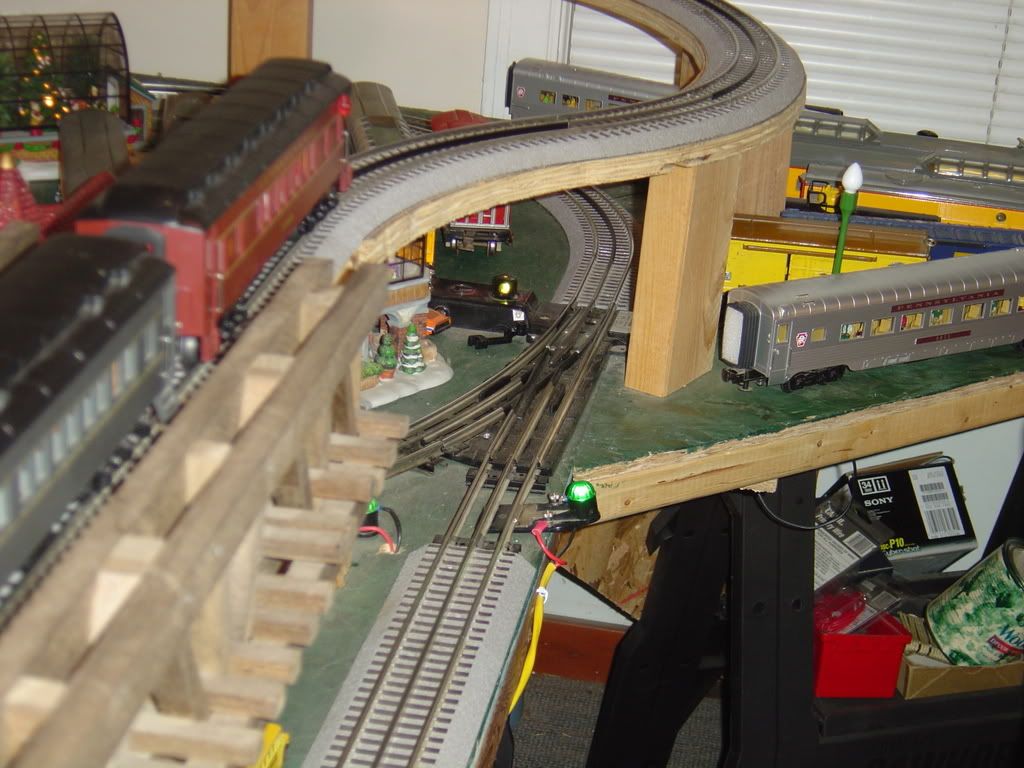This is the second Fastrack O36 curve failure I have had on my layout. What I mean by that is, even though the track has direct power supplied underneath, and both the rails and the wheels and rollers are thoroughly clean, there is a section within the same piece track which poorly conducts electricity although it does conduct.
The only pattern so far is both tracks have the slotted back roadbed. I thinking that the rails are deteriorating electrically (probably where I can't see anything). The diode check will tone each rail (continuity), and I have eliminated the pins from the equation as well, but as you can hopefully see from the video there is a problem in the middle of the curve. Even with a 10X magnifying glass, I don't see any pits or imperfections, just very clean shiny track.
Take a look at the video I made below showing a basic experiment with the bad track vs. a good track.
Here is the link to youtube.
<dl><dd>http://www.youtube.com/watch?v...amp;feature=youtu.be</dd></dl>
It's a very short video.
Has anyone else experience this? Once I replace the bad track, all was well on my layout again.
By the way, even though my layout is in my unfinished basement, I have a dehumidifier which keeps the area by the layout at 45% all year round. The temperature gets between 62 in the coldest of the winter to about 72 degrees in the summer.




